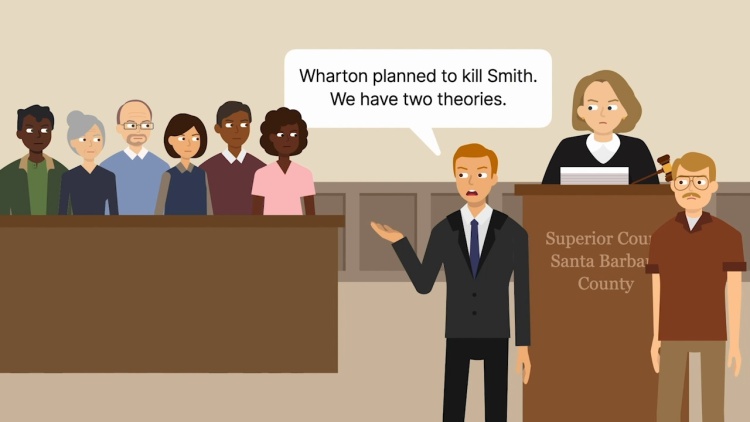People v. Wharton
California Supreme Court
53 Cal. 3d 522, 809 P.2d 290 (1991)

- Written by Josh Lee, JD
Facts
Law-enforcement officers found the body of Linda Smith inside a barrel in her home. An autopsy revealed that Smith had been struck three times on the head with a blunt object. Smith's ex-husband later found a hammer underneath a bed in the house. Officers arrested George Wharton (defendant), who waived his Miranda rights and confessed to killing Smith. Wharton told the officers that he lived with Smith and that they got into an argument on the night of February 26. Wharton said that he and Smith had been drinking heavily, that Smith threw a book at him, and that Wharton then hit her in the head. Wharton said that although he knew he was hitting Smith, he was in a violent rage at the time. Wharton's story to officers was somewhat inconsistent, and he at one point said that he may have strangled Smith in addition to hitting her on the head. Wharton also taunted officers during his confession and told them to "do some detective work" to figure out what happened. At trial, the State of California (plaintiff) presented evidence that before and after Smith's death, Wharton had been selling and trading Smith's property in order to buy cocaine. The evidence suggested that Wharton falsely claimed that the items had been burglarized. The jury also heard testimony from Wharton's psychotherapists, including Wharton's statements to the therapists that he was seeking therapy because he was afraid he would hit Smith. Prosecutors theorized that Wharton planned to kill Smith and that he either took the hammer from the toolbox and placed it under the bed to have nearby to strike Smith, or he went to the toolbox to get the hammer intending to kill Smith with it. Wharton presented the theory that the killing was provoked by a weeks-long period of conduct related to his ongoing dysfunctional relationship with Smith. Wharton requested a jury instruction that explicitly stated that provocation for a killing in the heat of passion could occur over a considerable period of time and that the jury must take such period of time into account when deciding if there was a sufficient cooling period for the passion to subside. The trial court refused to provide this instruction and instead gave the standard California jury instruction on voluntary manslaughter. The standard instruction included definitions of heat of passion, provocation, and the cooling period. Wharton was convicted of first-degree murder and sentenced to death, and the case was automatically appealed to the California Supreme Court.
Rule of Law
Issue
Holding and Reasoning (Lucas, C.J.)
Dissent (Mosk, J.)
What to do next…
Here's why 899,000 law students have relied on our case briefs:
- Written by law professors and practitioners, not other law students. 47,000 briefs, keyed to 994 casebooks. Top-notch customer support.
- The right amount of information, includes the facts, issues, rule of law, holding and reasoning, and any concurrences and dissents.
- Access in your classes, works on your mobile and tablet. Massive library of related video lessons and high quality multiple-choice questions.
- Easy to use, uniform format for every case brief. Written in plain English, not in legalese. Our briefs summarize and simplify; they don’t just repeat the court’s language.





